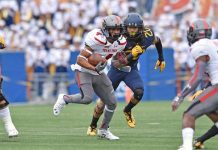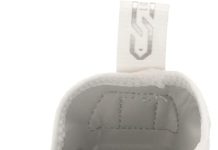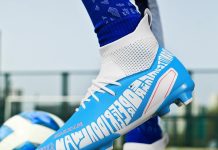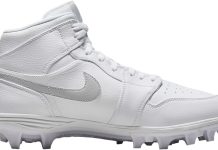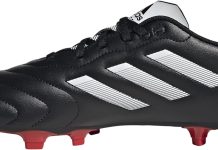Football enthusiasts often find themselves pondering whether football cleats can be worn on artificial turf. This burning question arises due to concerns about performance and safety on the field. In this article, we will address this inquiry head-on, providing you with all the information you need to make an informed decision. Whether you are a seasoned player or just starting out, delving into the world of artificial turf can be both exciting and intimidating. So, let’s set the score straight and discuss the compatibility of football cleats with artificial turf.
Overview
Welcome to our comprehensive guide on the use of football cleats on artificial turf! In this article, we will explore the difference between natural grass and artificial turf, delve into the various types and features of football cleats, and discuss the implications of wearing them on artificial turf. We will also provide alternatives to football cleats specifically designed for artificial turf and offer insights on what factors to consider when choosing cleats for this type of surface. Finally, we will touch on the importance of maintaining artificial turf for optimal performance and longevity. Let’s get started!
The Difference between Grass and Artificial Turf
Review contents
Grass Turf
Grass turf, also known as natural turf, is the traditional playing surface for football. It consists of natural grass that is specially cultivated and maintained to meet the requirements of the sport. Grass turf offers a more organic and familiar playing experience, providing a soft and cushioned surface for players. However, maintaining grass turf requires regular mowing, watering, and overall care to ensure its durability and playability.
Artificial Turf
Artificial turf, on the other hand, is a synthetic alternative to natural grass. It is made up of a combination of plastic fibers, rubber infill, and other materials, engineered to mimic the look and feel of real grass. Artificial turf offers several advantages over grass turf, such as durability, weather resistance, and lower maintenance requirements. It is designed to withstand heavy foot traffic, varying weather conditions, and provide a consistent playing surface.
This image is property of artificialgreens.org.
What Are Football Cleats?
Football cleats are specialized footwear designed to enhance traction and provide stability for players on the field. They feature protruding studs or cleats on the outsole, which dig into the playing surface, preventing slipping and allowing for quick pivots and changes in direction. Football cleats come in various types and designs, catering to different playing styles and field conditions.
Types of Cleats
There are three main types of football cleats: molded cleats, interchangeable cleats, and turf shoes. Molded cleats have permanent studs or cleats attached to the outsole and are suitable for natural grass fields. Interchangeable cleats allow players to change out different stud lengths depending on field conditions, providing versatility and adaptability. Turf shoes, as the name suggests, are specifically designed for artificial turf and feature numerous small rubber studs that grip the surface.
Features of Football Cleats
Football cleats also come with a range of features to optimize performance and protect athletes. They often incorporate cushioning technology to absorb impact and reduce the risk of injuries. Cleats may also have reinforced toe boxes and ankle support to enhance stability during quick movements. Additionally, breathable materials and moisture-wicking properties help keep feet dry and comfortable throughout the game.
Can You Wear Football Cleats on Artificial Turf?
The question many football players ask is whether it is suitable to wear football cleats on artificial turf. The answer is a bit more nuanced. While football cleats are primarily designed for natural grass surfaces, it is generally acceptable to wear certain types of cleats on artificial turf. However, it is crucial to exercise caution and choose the right type of cleats to ensure optimal performance and avoid potential issues.
The main concern when wearing football cleats on artificial turf is the potential damage to the turf itself. The aggressive studs or cleats found on traditional cleats can cause excessive wear and tear on the synthetic grass fibers, leading to premature degradation of the turf. This can result in a subpar playing surface and increased maintenance or replacement costs for field owners and operators.
This image is property of footballscoop.com.
Implications of Using Football Cleats on Artificial Turf
Potential Damage to the Turf
Wearing traditional football cleats on artificial turf can lead to significant damage to the playing surface. The long studs or cleats on these cleats can dig into the turf and tear the synthetic grass fibers. This can create uneven patches, reduced infill levels, and an overall compromised playing surface. In severe cases, it may necessitate the replacement of sections or even the entire turf, incurring substantial expenses.
Increased Risk of Injuries
Another implication of using football cleats on artificial turf is the increased risk of injuries. The aggressive studs on traditional cleats were designed to grip natural grass effectively, but they may not perform as desired on the synthetic surface. Players may experience reduced traction or unexpected slipping, leading to potential falls, twisted ankles, or knee injuries. The fast-paced nature of football requires quick direction changes and sudden stops, making proper footwear crucial for injury prevention.
Poor Performance
Wearing football cleats on artificial turf can also result in suboptimal performance. The lack of traction and stability may hinder players’ ability to make sharp cuts, accelerate quickly, or maintain balance during high-intensity movements. This can affect their overall performance, agility, and confidence on the field. Players may struggle to perform at their best, impacting team dynamics and potentially affecting the outcome of the game.
Alternatives to Football Cleats on Artificial Turf
To address the concerns associated with wearing football cleats on artificial turf, there are specific alternatives available to players. These alternatives are designed to provide the necessary traction and stability without causing harm to the playing surface.
Turf Shoes
Turf shoes are specifically designed for artificial turf and are an excellent alternative to traditional football cleats. They feature numerous short rubber studs or a patterned outsole designed to maximize grip on synthetic surfaces. Turf shoes provide adequate traction without causing undue damage to the turf, making them a safer and more suitable option for playing on artificial turf.
Molded Cleats
Molded cleats, often referred to as turf cleats, are another viable option for artificial turf. These cleats have shorter and more numerous studs compared to traditional cleats, offering improved traction on synthetic grass. While not specifically designed for artificial turf, molded cleats strike a balance between traction and reduced turf damage. However, they may not perform as effectively as turf shoes on certain types of artificial turf or in specific weather conditions.
Artificial Turf Specific Cleats
Some cleat manufacturers offer models specifically designed for artificial turf. These cleats often feature a unique stud configuration or outsole pattern optimized for synthetic playing surfaces. They strike a balance between traction and minimizing damage to the turf. Artificial turf specific cleats can provide an excellent option for players seeking top performance while preserving the longevity of the playing surface.
This image is property of ikfblog.files.wordpress.com.
What to Consider When Choosing Cleats for Artificial Turf
When selecting cleats for artificial turf, several factors should be taken into account to ensure the best possible playing experience.
Turf Type and Infill
Different types of artificial turf may have varying levels of firmness, infill materials, and pile heights. It is essential to consider these factors when choosing cleats for artificial turf. Some cleats may perform better on sand-based turf, while others may be more suited for rubber-based or hybrid turf systems. Checking with the manufacturer or consulting with experienced players can provide valuable insights into cleat compatibility.
Turf Conditions
The condition of the artificial turf also plays a role in cleat selection. Consider whether the turf is worn, heavily used, or freshly installed. Worn and heavily used turf may require more aggressive treads for better traction, while newly installed or high-quality turf can offer sufficient grip with less aggressive sole patterns.
Playing Position
The specific position played on the field can also influence the choice of cleats. For example, linemen may require more stability and support, while skill position players may prioritize speed and agility. Understanding the demands of your position can help narrow down the options and select cleats tailored to your playing style.
Personal Preference
Ultimately, personal preference can play a significant role in cleat selection. Some players may have specific brands or models they are comfortable with and perform well in. Trying on different cleats, considering comfort, fit, and overall feel, can help determine the best choice for each individual.
Maintaining Artificial Turf
Proper maintenance of artificial turf is crucial for prolonging its lifespan and ensuring optimal playability. Here are some essential tips for maintaining artificial turf:
Regular Cleaning
Regularly removing dirt, debris, and organic matter from the turf is vital to prevent compaction and maintain its appearance. This can be done using a stiff brush or a specialized turf rake. Vacuuming may also be necessary to remove finer particles and infill from the surface. Power washing or using mild detergents can help remove stubborn stains or spills.
Avoiding Excessive Wear
To minimize wear and tear, it is advisable to rotate the playing areas regularly. This will distribute the foot traffic more evenly and prevent specific sections from becoming excessively worn. Limiting non-sport activities on the turf, such as walking or stationary activities, can also reduce unnecessary stress on the surface.
Repairing Damages
Promptly addressing any damages or repairs is crucial to prevent further deterioration. Regularly inspect the turf for any tears, cuts, or loose seams. Small repairs can be done using specialized adhesives or by patching damaged sections. For extensive repairs or replacement needs, it is advisable to consult with professionals to ensure proper restoration of the turf.
This image is property of qph.cf2.quoracdn.net.
Conclusion
In conclusion, while football cleats were primarily designed for natural grass, certain types of cleats can be worn on artificial turf with caution. However, extensive use of traditional cleats on synthetic surfaces can potentially damage the turf, increase the risk of injuries, and negatively impact performance. To overcome these challenges, alternatives like turf shoes, molded cleats, or artificial turf-specific cleats are recommended. When choosing cleats for artificial turf, factors such as turf type, conditions, playing position, and personal preference should be taken into consideration. Lastly, proper and regular maintenance of the artificial turf is essential for ensuring its longevity and optimal playability. By following these guidelines, football players can enjoy a safe and enjoyable game on artificial turf while preserving the quality of the playing surface. Happy playing!









